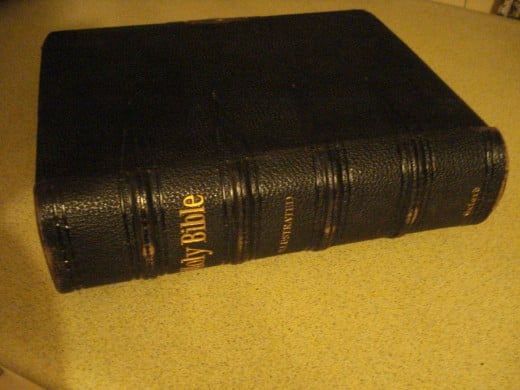Proper Use of Quotation Marks
Quotation Functions
When we write, we almost always need to research some facts we are unsure about and then we have the problem of wondering how to present that quote in our work and whether we should give credit to the original. We often hear warnings of the consequences of plagiarism and, if we are wise, decide that it is safest to do the right thing and give credit where credit is due.
There are two ways in which we can quote: it can be a direct quote or indirect. It may seem surprising, but even an indirect quote can be labelled plagiarism. So, what exactly is plagiarism? How should we show that we are quoting from a particular source? Why do we use quotes? How should we give credit? Do we need to ask for permission to use the quote?
Plagiarism
To plagiarise is to copy the work of another writer and pass it off as one's own. Students, especially, have often been accused of doing this, but it has been done by many other writers, too.
Plagiarism Consequences: Consequences for high school students might be that they are reprimanded and given low marks or grades, but the consequences may be much greater for other writers. Plagiarism may mean a Fail for a Thesis or dismissal from work for a professional writer. There are other serious penalties for plagiarists, including fines and even imprisonment. It is definitely something to be avoided.
How to Avoid the Consequences of Plagiarism: Do the research necessary, find the information needed, but when you make notes write them in your own words. In this way, when you add the information in your writing it will be fresh and your own work. If there is no other way to express the information, quote it and give credit.
If you are unsure whether what you have written is something you have remembered, there are ways to check for plagiarism and you can find these on a number of websites.

Quoting Sources
How should sources be quoted? If it is a college paper or a thesis, there are sure to be written rules; refer to them and follow them. If you are writing articles, make sure that you use quotation marks. There are some general rules for these:
A brief quote: Within your text, open the quotation marks, write the quote, then close the quotation marks, e.g.
Jesus quotes one of the rules for holy living from Leviticus (19.18) when He sums up the Commandments and then adds, "Love your neighbour as yourself" (Mk 12.31).
A longer quote: Usually, anything longer than about forty words should begin on a separate line and be indented about two centimetres or an inch, or ten spaces tapped on the space-bar. When a quote is indented you do not need to use quotation marks, but you still need to give credit. If a quotation is to be longer than a page, it is probably best put in an appendix.
Notes:
An Ellipsis: This is used when something is omitted from the quotation and is shown by a set of dots.
Square Brackets: If extra letters, words or figures are added within a quote they are placed between square brackets or braces: [ ]
A Quote Within a Quote: If the passage being quoted is within double quotation marks and it contains a quotation, use single quotation marks for the quote. If the passage being quoted is indented and therefore has no quotation marks, use double quotation marks, e.g.
- It is generally accepted that Moses was the author of the Books of the Law, and this is confirmed, so far as Exodus is concerned, in St. Mark's Gospel when Jesus referred to Moses, "...have you not read in the book of Moses, in the story about the bush..." (Mark 12.26).
Reasons for Using Quotations
It is not a good idea to use a quotation just to prove that you have done some research; there should be a reason for its use, such as:
- To give exact information on a topic.
- To refer to information given by a well-known authority in the field.
- To present findings, tables and conclusions of other people's research.
- To support your own point of view or to present an opposing position.
How to Give Credit
Schools, colleges and universities usually have a handout specifying their own rules for giving credit. Other writers may vary, but credit must be given and generally it may be in the following four ways:
- In brackets in the body of writing: e.g. Jesus gave the Lord's Prayer (Matt 6.9-15) as a model for His disciples to follow.
- In brackets at the end of the quote: e.g. The Books of the Law contain different genres including history, rules for worship and for religious ceremonies, sermons and even family trees (Pat Alexander, ed., p. 81).*
- As a footnote: In the body it is given as a digit at the end of the quote, e.g. "...end"¹ of time. This refers to the footnote, e.g. ¹ Hughes and Travis, p. 291.
- In an Appendix and/ or the Bibliography: Here it is similar to Note 1 (see below), except that the surname of the first Author mentioned precedes his Christian name as the first authors of reference are listed alphabetically.
Notes:
- The first time a reference is quoted, all the information should be given, that is: The Author/s (Christian name first) (comma), the date of publication (period), the title (in italics) (period), the place of publication (colon), the publisher (comma), plus the page number of the reference (period), e.g. Gerald Hughes and Stephen Travis, 1981. Introducing the Bible. Icknield Way, Tring, Herts., England: Lion Publishing, p. 60.
- Further quotes from the same reference may be abbreviated, e.g. Hughes and Travis, p.8
- The page number of the reference quoted should always be included, except where that page has already been quoted on the writer's page, and then it can be noted as op. cit. which means 'already cited.'
- If the reference has already been given for that book but a different page is quoted, ibid. (Latin for 'in the same place') is used, e.g. ibid. p.354
* References should be given for either direct or indirect quotes.
Asking for Permission
Unless the copyright has expired and the reference is now in the public domain, it is important to ask for permission to use a quotation. It is a legal necessity according to the copyright Act. It is mostly possible to apply by email, but often this can be difficult as publishers buy each other out, so the one now responsible is quite different from that quoted in the reference. Sometimes the author, or his descendants hold the copyright. Applying for permission can take a very long time.
Many of the old hymns are now in public domain (which means that they can be quoted and used freely) and these can be found on websites. Many writers feel that the Bible is for everyone, but if you are using it extensively it is necessary to apply for copyright: e.g. for the NRSV permission must be obtained from the National Council of Churches of Christ in the USA and they may require a list of all the verses quoted; that can be time-consuming, so enough time must be allowed before publication to obtain the permission needed.
Hints for Report Writing
- How to Write a Formal Report
The main elements of a formal report or a dissertation contain certain rules and there may be requirements in different institutions and disciplines. The basics are shown here and could be useful in helping to construct a variety of report papers. - Report Writing: How to Use Tables, Figures and Computer Materials
How to use tables, figures and computer materials in report writing can be confusing. This article helps to show the difference between the various support materials and underlines the importance of only using relevant materials. - How to Write Footnotes in a Report
Includes the reasons for writing footnotes, how to cite references when citing books, and explanation of terms used in footnote/endnote citation and some useful extra hints on this often overlooked necessity for the student and the serious writer.









